Best Ergomatic Cabbed-Lorry Model? PART 23.Page 37.TRUCKNETUK.
AEC SUPER MANDATOR V8 3VTG6RGAE 090 Mk1 High Tower Project-Concept-Prototype 6x4 Tractive Unit.
Ramone.
VALKYRIE replies:-
I understand what you mean,but Graham Edge confirms what I’ve said in my POST
22,page 34,in regard to it’s cab,in that it was well-appointed and I’ve seen photographs of
the interior of this cab,because they are in Graham’s informative AEC MANDATOR V8 Book,a copy
of which I recently bought on Amazon UK.The cab had Bostrum seating as well.
Some prototype motor vehicle models did actually signal the go-ahead to motor vehicle
manufacturers to actually go in to production of whatever motor vehicle(s) that had been
prototyped.
But,as you say,the AEC Super Mandator V8 3VTG,unfortunatly,never went in to production.
Carryfast.
YEARS AHEAD OF THE BRITISH MOTOR INDUSTRY.
VALKYRIE replies:-
You will discover,that in some respects,German and British engineering in fact
mirrored and kept up with each other,while in some other respects one of these countries was well
ahead of the other ![]() Furthermore,the engineering of other countries should not be overlooked,and
Furthermore,the engineering of other countries should not be overlooked,and
I’m placing emphasis on motor vehicle engineering in the case of America,France,Czechoslovakia,
and Italy - plus Germany ![]() It is accepted by motoring writers and historians that the motorcars
It is accepted by motoring writers and historians that the motorcars
produced in these countries in the 1930s and 1940s were generally more advanced than British
motorcars,and in fact certain innovations,such as hydraulic brakes,synchromesh transmission,the
electric starter motor,rubber-mounted engines - floating power,power assisted steering,motor
air conditioning,car radio,panoramic windscreens,first practical air suspension,automatic
transmission,rotary gasoline engine,and so on were all invented by the American motor industry ![]()
The vast majority of the above innovations were also incorporated in to the motor vehicles made
and designed in other countries,such as Great Britain,France,Germany,Italy,Sweden,etc ![]()
ADVANCED - EUROPEANS AND AMERICANS - AND RETARDED - BRITISH.
In the styling department,the British-designed and built streamlined Flying Standard motorcar,QV
below,with it’s Airline fastback was certainly modern and even advanced over certain other
British motorcars of the period ![]() But technical and mechanical-wise,in common with many other
But technical and mechanical-wise,in common with many other
British motorcars,it lagged behind many European and American motorcars ![]() ,many of which had
,many of which had
independent front suspension,overhead valves and overhead camshaft engines,hydraulic
brakes,unitary construction,backbone chassis frames,advanced aerodynamics,independent rear
supension,and so on ![]()
This Standard Flying 20 had NONE of those features! ![]()
![]() :It had a side valve engine,front and rear
:It had a side valve engine,front and rear
beam axles,front and rear elliptic springs,Bendix cable-operated brakes,seperate chassis frame and body,etc ![]() This motorcar in common with other British motorcars was typical of retarded British motorcar design in the 1930s
This motorcar in common with other British motorcars was typical of retarded British motorcar design in the 1930s ![]() These mainly mass-produced motorcars did very good jobs for their owners it must be said
These mainly mass-produced motorcars did very good jobs for their owners it must be said ![]() Signs of technical progress became apparent when Standard offered IFS on some of it’s models in 1939
Signs of technical progress became apparent when Standard offered IFS on some of it’s models in 1939 ![]()
Aeroplane designer,Edmund Rumpler,of Austria,turned his attention to designing an advanced
aerodynamic motorcar,and the following information is from this website ![]() :-
:-
jalopnik.com/223396/know-thy-ger … ry-tugboat
“Lady and gentlemen, we present for your viewing pleasure, a creation of Edmund Rumpler. This
mid-engined mechanical marvel, the product of wartime aviation experience and sheer Germanness ![]() ,
,
featured a W6 engine long before Volkswagen began fusing Vs together. Winglets, a teardrop-shaped
cabin and body, and that gnarly center headlight, somehow conspire to produce a super-slippery
drag coefficient. When the boys at V-Dub pulled one out of the Deutsches Technikmuseum Berlin in
1979 and ran it through their wind tunnel, the Tropfenwagen returned an astonishing figure of
0.27 Cd. (They wouldn’t be able to create a peoples’ coefficient that low until the 1988 Passat.)
Keep in mind, Rumpler’s creation predated even the concept of a digital computer. Sadly, the high
point of the Topfenwagen’s life was when a couple of them were torched for fun in the famous 1927
Fritz Lang movie, Metropolis. Only two remain in German Museums, where I’m sure they’re kept
company by other vacky but precise Deutchland flotsam.” ![]()
This motorcar also has independent rear suspension ![]()
RUMPLER Tropfenwagen Aerodynamic Motorcar,designed and manufactured by Dr.Edmund Rumpler in
Berlin,in 1921.The world’s first production aerodynamic motorcar ![]() :-
:-
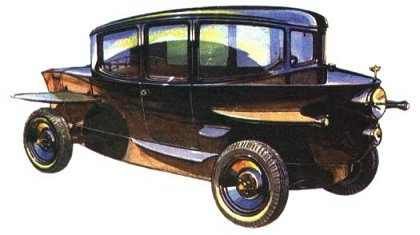
But the above Rumpler of 1921 was still in some respects,more techically advanced than the 1936
Flying Standard,fifteen years it’s junior!!! ![]()
![]()
![]()
![]()
![]() …:-
…:-
STANDARD FLYING 20 4-DOOR 6-LIGHT FASTBACK STREAMLINED MOTORCAR,1936.Beautiful ![]() :-
:-

Automotive Historian,Michael Sedgwick said that Great Britain,motorcar-design wise,was more
technically isolated from the rest of the world than at any other time in the history of the
motorcar.And “The ordinary British motorcar was lacking in inspiration.” ![]()
![]()
Automotive Historian,Johnathan Wood,blames this situation on a poor class-ridden British
education system ![]() ,compared to a superior German social class-free education system that actually
,compared to a superior German social class-free education system that actually
inspired people to became engineers and scientists ![]() ,where they studied in purpose-made technical
,where they studied in purpose-made technical
high schools ![]() These provided a technical education that was the finest in the world
These provided a technical education that was the finest in the world ![]() And,at the end
And,at the end
of their education,the students were honoured with Dr Ing - Doctor of Engineering degrees ![]() -
-
British engineers are not so honoured ![]()
Michael Sedgwick said the 1934 Berlin Motor Show was the most spectacular of the salons and
technically the brightest ![]()
The Europeans had other things in their favour:The Italians had Autostradas,the Germans had
Autobahns - differant national names for motorway systems,which in turn accelerated the
development of high performance motor vehicles with advanced aerodynamics ![]() - and so did Grand
- and so did Grand
Prix Motor Racing ![]()
The Germans dominated Grand Prix motor racing of the 1930s with their victorious and magnificent
Silver Arrow Mercedes-Benz and Auto Union Grand Prix Motor Racing Motorcars ![]()
The Germans also dominated Formula One Grand Prix Motor Racing for a period in the 1950s ![]()
One of the all time British great Motor Racing Drivers,Sir Stirling Moss,famously won the
legendary Mille Miglia Gran Turismo (Grand Touring) Sports Motorcar Motor Race in 1955 ![]() ,in a
,in a
magnificent Mercedes-Benz 300 SLR,No.722 ![]() -
-
MERCEDES-BENZ 300 SLR OPEN GRAN TURISMO -GRAND TOURING-GT SPORTS MOTORCAR,No.722,driven by the legendary Sir Stirling Moss,navigated
by Denis Jenkinson - they won the 1955 Mille Miglia - and at an all time record speed! ![]()
![]() :-
:-
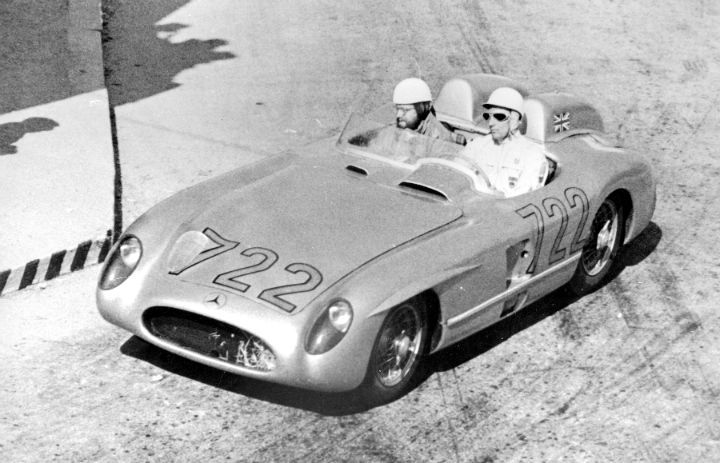
AUTO UNION C-TYPE SILVER ARROW GRAND PRIX MOTOR RACING MOTORCAR,1936:-

MERCEDES-BENZ W125 SILVER ARROW GRAND PRIX MOTOR RACING MOTORCAR:-
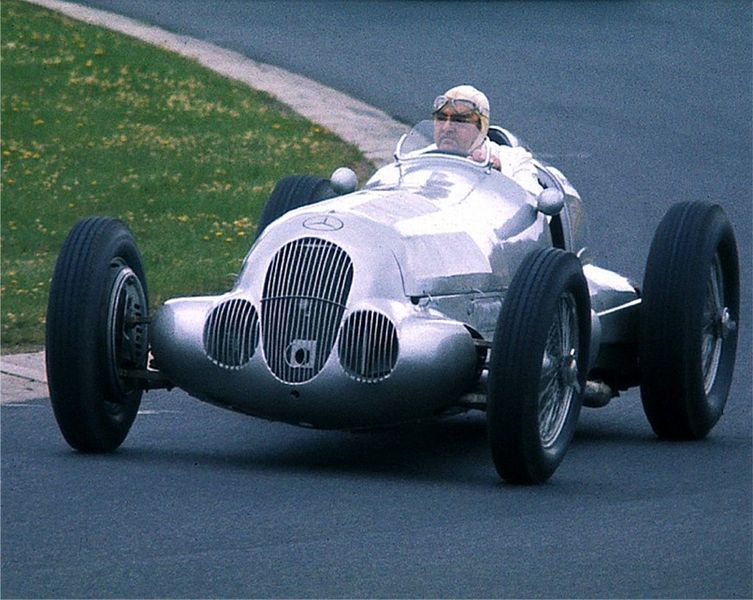
Hungarian engineer,Paul Jaray,and Dutch engineer,John Joop “Jan” Tjaarda Van Sterkenburg
led the way in motor vehicle aerodynamics,and their designs were major influences on many of
the world’s motor vehicle manufacturers,including Chrysler,Volvo,Volkswagen,Audi,Adler,Ford,
Peugeot,Pierce-Arrow,Cadillac,Singer,Hansa,Maybach,Voisin,Steyr,Toyota,Tatra,etc.In fact some of
these motorcar makers had to pay royalties to Jaray! ![]()
![]()
John Joop “Jan” Tjaarda Van Sterkenburg came out with several aerodynamic motorcar designs,
including the Lincoln Zephyr V12 Motorcar successful ,slinky smooth and beautiful streamliner-
LINCOLN ZEPHYR V12 4-DOOR 6-LIGHT AERODYNAMIC MOTORCAR,1936:-
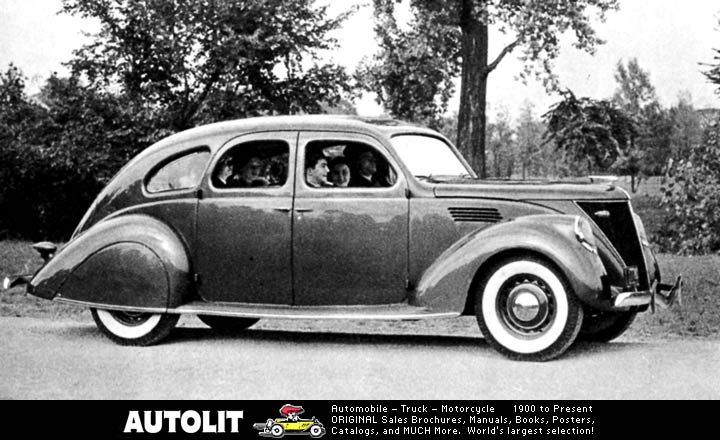
The most famous aerodynamic motorcar model in the world:-The Volkswagen Beetle ![]()
The best selling motorcar in the world:-The Volkswagen Beetle ![]()
BEATLES.The most famous Volkswagen Beetle in the World - LMW 281F,the white Volkswagen Beetle
Motorcar on the front cover of the ABBEY ROAD Album of THE BEATLES ![]() :-
:-

The Volkswagen Beetle Motorcar,LMW 281F has become part of the interesting,but very suspect,
the PAUL IS DEAD fantasy-rumour,which is actually a Beatles in-joke ![]() :-
:-
BEATLES.VOLKSWAGEN BEETLE MOTORCAR,LMW 281F = Linda McCartney Weeps,28 years old if Paul had
lived.Paul Is Dead fantasy ![]() :-
:-
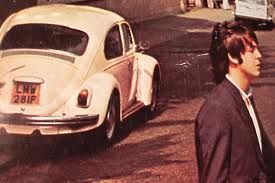
The greatest,biggest and most successful popular-pop music group-band in the world to date:THE
BEATLES - John,Ringo,Paul and George during the Abbey Road Album cover photographic session,
on Friday morning,8th August,1969,Ringo and Paul having some fun with the photographer:Paul’s
wife,Linda ![]() :-
:-
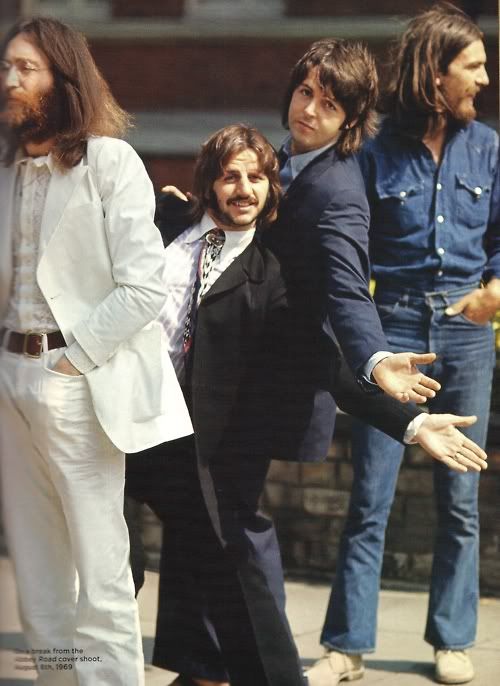
MORE GERMAN AND BRITISH INVENTIONS…AND ONE DUTCH.
Cornish engineer,Richard Trevithick,invented the high pressure steam engine in 1800.
The diesel engine was invented by Rudolph Diesel in 1893.
First disc brakes:Invented by British engineer and motorcar maker,Frederick William Lanchester,
Hon FRAES FRS,in 1902.
First four wheel drive ROAD vehicle was the British-built Fowler traction engine in 1880.
The following three paragraphs of information comes from this website:-
4x4abc.com/4WD101/who.html
First four wheel drive MOTOR vehicle was designed by Ferdinand Porsche (yes, the founder of
Porsche motorcars) for the Austrian lorry manufacturer Jacob Lohner in 1900.The first motor
vehicle in the history of four wheel drive had electric hub motors on each wheel - the engine
powered a generator for power supply ![]()
First mechanical four wheel drive (transfer case, drive shafts etc.) for MOTOR vehicles was built
by the Dutch company Jacobus Spyker in 1902.
First four wheel drive lorry:Invented by Mercedes-Benz in 1903,although in those days the company
traded as just Mercedes - It became Mercedes-Benz in 1926.
MERCEDES-BENZ.MERCEDES DERNBURG FOUR WHEEL DRIVE ALL WHEEL STEER LORRY.1907:-
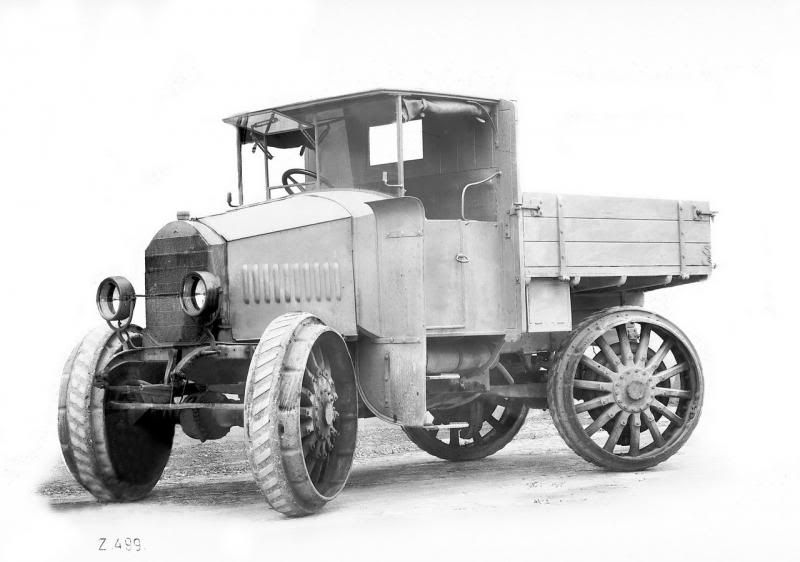
From WIKIPEDIA:-
1923: The first lorry with pre-chamber diesel engine made by MAN and Benz. Daimler-Motoren-
Gesellschaft testing the first air-injection diesel-engined lorry.
1927: First lorry injection pump and injection nozzles of Bosch. First passenger motorcar
prototype of Stoewer.
To quote me from the Gardner Engines Thread:-“Gingerfold.According to both Pat Kennett and Peter
Davies,it was in December 1924 that MAN produced the world’s first direct injection diesel
engine,and this 5-litre 4-cylinder engine is regarded as the forerunner of the modern diesel
engine.”
In the following reply:-
To quote Graham Edge from the Gardner Engine Thread,again:-“The Gardner L2 design was the first
commercially successful DIRECT INJECTION diesel engine that was used in road going vehicles.”
SOME GERMAN AND BRITISH INVENTIONS PARALLELED EACH OTHER.
From this website:-
inventors.about.com/library/inve … engine.htm
Dr. Hans Von Ohain and Sir Frank Whittle are both recognized as being the co-inventors of the jet
engine ![]() Each worked separately and knew nothing of the other’s work. Hans Von Ohain is considered
Each worked separately and knew nothing of the other’s work. Hans Von Ohain is considered
the designer of the first operational turbojet engine. Frank Whittle was the first to register a
patent for the turbojet engine in 1930. Hans Von Ohain was granted a patent for his turbojet
engine in 1936. However, Hans Von Ohain’s jet was the first to fly in 1939. Frank Whittle’s jet
first flew in in 1941 ![]()
JET ENGINE CO-INVENTORS -Great Britian’s Sir Frank Whittle and Germany’s Hans Von Ohain ![]() :-
:-
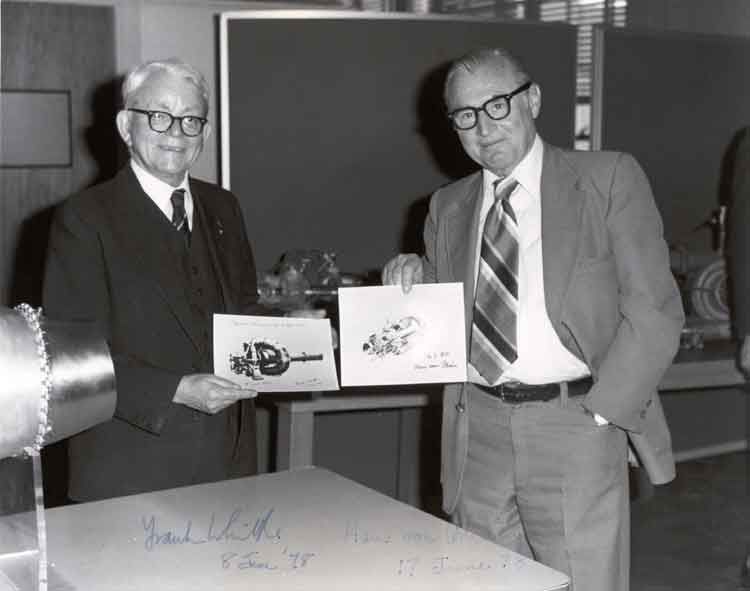
Rudolf Kühnhold (1903—1992) was an experimental physicist who is often given credit for
initiating research that led to the Funkmessgerät (radio measuring device — radar) in Germany.
From 1933 to 1935 he developed most,if not all,of the major elements of radar ![]()
Sir Robert Alexander Watson-Watt, KCB, FRS, FRAeS (13 April 1892 — 5 December 1973) is considered
by many to be the "inventor of radar.Work did not begin on radar until 1935,and by then Germany
had a two-years lead.However,Great Britain did have one big advantage from 1940:-The Cavity
Magnetron was invented which enabled high power centrimetric radar,which gave the allied forces a
big advantage over the Germans,Italians and Japanese in World War Two ![]()
Both the British and the Germans invented WINDOW for jamming radar.
Both the British and the Germans invented bouncing bombs for blowing up dams.
German rocket engineering was at least twenty years in advance of the rocket engineering of other
countries.
German aviation was also very advanced too:-Luftwaffe Advanced Aircraft Projects to 1945:
Fighters and Ground Attack Aircraft, Lippisch to Zeppelin v. 2 (Luftwaffe Secret Projects):-

And it is also wonderfully and sensationally claimed that German ■■■■’s had developed advanced
special flying machines - in other words FLYING SAUCERS! ![]()
![]() …GREAT STUFF!
…GREAT STUFF! ![]()
![]() :-
:-
thesun.co.uk/sol/homepage/fe … zi-flying-
saucers-capable-of-destroying-London-and-New-York.html
Hitler’s Flying Saucers: A Guide to German Flying Discs of the Second World War book,available
from Amazon UK ![]() :-
:-
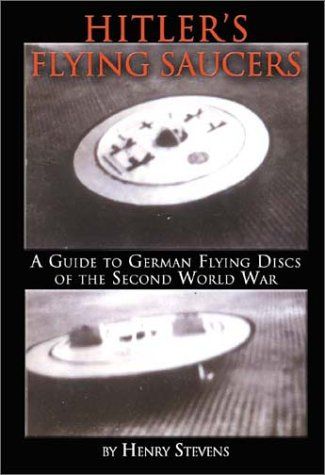
A beautiful German ■■■■ Flying Saucer - UFO 1 ![]() :-
:-
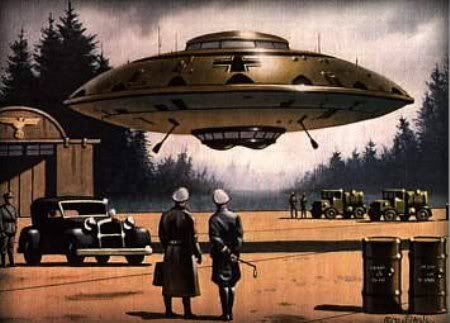
The above facts objectively show that British engineering was equal to German engineering in some
respects,ahead in a few others,but obviously behind the Germans,Europeans and Americans in some
of the other engineering endeavours - especially on the motor vehicle side ![]()
WIKIPEDIA.German Inventions.
They are in several catagories including:-
Transportation
Automobile Benz Velo Modern automobile (gasoline engine) by Karl Benz in 1885.[47]
First electric passenger train by Siemens
First regular electric tram service using pantographs or trolley poles, the Gross-Lichterfelde Tramway by Siemens
Otto engine by Nicolaus Otto
Diesel engine by Rudolf Diesel
■■■■■■ engine by Felix ■■■■■■
Modern lorry in 1896 by Gottlieb Daimler
Motorcycle in 1885 by Gottlieb Daimler and Wilhelm Maybach
Zeppelin (a type of rigid airship) by Ferdinand von Zeppelin in 1893.[48]
Rocket-powered aircraft by Fritz Stamer in 1928.
Air bag by Walter Linderer
World’s first practical all-metal aeroplane: Junkers J 1
Jerrycan
Gyrocompass by Hermann Anschütz-Kaempfe
Defogger by Heinz Kunert
Krueger flap by Werner Krüger
BUT,to be fair,and it CANNOT BE DENIED,is the fact that the number of British inventions far outnumber German ones ![]() Nevertheless,it does not take away the magnificent achievements of the brilliant German engineers and scientists,including Dr.Wernher Von Braun,the Father of Rocket Science
Nevertheless,it does not take away the magnificent achievements of the brilliant German engineers and scientists,including Dr.Wernher Von Braun,the Father of Rocket Science ![]()
Gingerfold.
THE WORLD’S MONEY IS NOW CONTROLLED AND MANIPULATED BY COMPUTERS.
I wonder if you know that the world’s banks and financial institutions now employ computer programmers to programme computers ![]()
![]() These computers are programmed in such a way in order to make
These computers are programmed in such a way in order to make
more money - and to increase the value of money,shares,interests,etc - for whatever bank or
company these computers are working for ![]()
![]() Computers,not human beings,now make money transactions
Computers,not human beings,now make money transactions ![]()
![]() with each other
with each other ![]() :There one aim is to increase the amount of money for the company or bank that they are working for
:There one aim is to increase the amount of money for the company or bank that they are working for ![]()
Ever since the world’s money has been controlled and manipulated by the computers,the world’s
money supply and system has become more and more un-stable ![]()
![]() This situtation is graphically
This situtation is graphically
dramatically portrayed in the following great novel ![]() :-
:-
WIKIPEDIA:-
The Fear Index is a 2011 novel by British author Robert Harris. It is set in a period of roughly 24 hours from the 6 May 2010–the date of the British general election and the Flash Crash. It follows the interactions of a group of employees at Hoffmann Investment Technologies, a fictional hedge fund operating in Geneva.
The story begins as Dr Alex Hoffmann, an American expat living in Switzerland, and the founder of his eponymous hedge fund, is attacked in his home by an unknown assailant. The next morning he proceeds to his company, where his British CEO, Hugo Quarry, is pitching for a renewed investment from the firm’s existing clients. They seek to utilise Hoffmann’s genius with algorithms into a system, named VIXAL-4, which can provide sufficient data on the markets to generate successful hedges.
Over the course of the business day the situation becomes unstable, with VIXAL assuming a level of risk considered unsustainable by the human staff, and they strive to shut it down. As this happens Hoffmann also begins to suspect that he is losing his mind.
Reception [edit]
Writing in The Guardian, literary critic Mark Lawson called the novel gripping, and described it as ‘a speedy read, [which] is the appropriate medium for a story in which many of the key events… take place in milliseconds’.[1] The Observer called it ‘thoroughly enjoyable’,[2] while Charles Moore in The Daily Telegraph wrote ‘The Fear Index is a frightening book, of course, as, with its title, it intends. Harris has an excellent sense of pace…’[3]
Film [edit]It is planned to make a film of this novel.
THE FEAR INDEX,BY ROBERT HARRIS,a novel about how money is controlled and manipulated by computers - THEY ARE TAKING OVER ![]()
![]() :-
:-

Robert Harris has written some very interesting novels,including ENIGMA,about British codebreakers breaking German Enigma Codes.Fascinating! ![]()
![]()
Maybe,some TRUCKNETUK Members have never heard of the CROSSLEY Motor Vehicle Marque,but it was
a relatively important marque from 1904 to 1958 - but the AEC - AVC = Associated Commercial
Vehicles group,of which Crossley was a member,unfortunately closed down the joint… ![]()
![]()
Crossley Motors Ltd remained a dormant company until 1969 - more of which later on… ![]()
![]()
The Gorton,Manchester-based Crossley marque is going to have the last say in this PART 23 ![]()
![]()
![]()
![]()
![]()
![]()
![]()
CROSSLEY MARQUE COPTIC CROSS BADGE:-
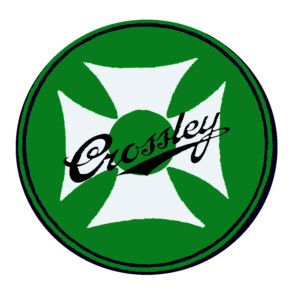
BURNEY STREAMLINE MOTORCAR,designed by the R100 Airship designer,Sir Charles Dennistoun
Burney,and later taken up by Crossley Motors.1930-1933.It was made in St. Martin’s Jam Factory on
the Cordwallis Industrial Estate,Maidenhead:-
BURNEY STREAMLINE MOTORCAR,RX 7014,PHOTOGRAPHED IN THE TRAFFIC IN LONDON,on Monday,15th
September,1930…a wonderful period photograph ![]() :-
:-
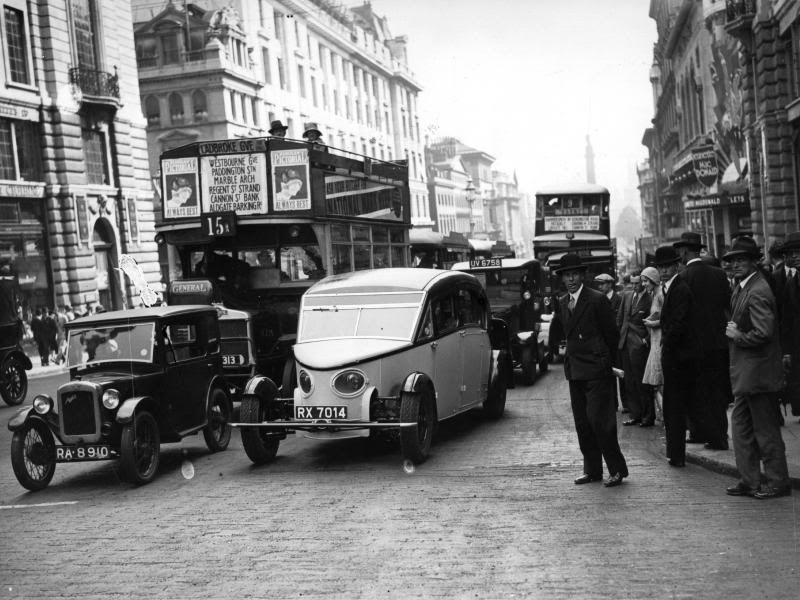
CROSSLEY STREAMLINE,REAR-ENGINED,STREAMLINED MOTORCAR,was the basic Burney Streamline design,but
with improvements and modifications,including a genuine and working front-mounted exposed radiator.1934 ![]() :-
:-
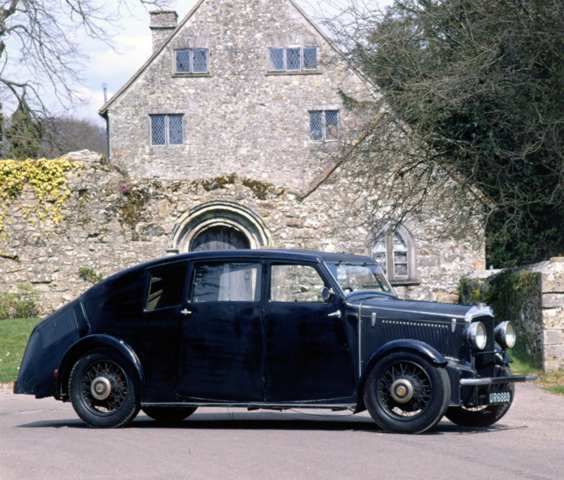
CROSSLEY MANCUNIAN/CROSSLEY-MCT H33/30R 63-SEAT 6x4 DOUBLE DECKER OMNIBUS,Chassis No.91301,AJX 77,1932-1934.Manchester CT No.71,re-numbered 320 in 1937:-
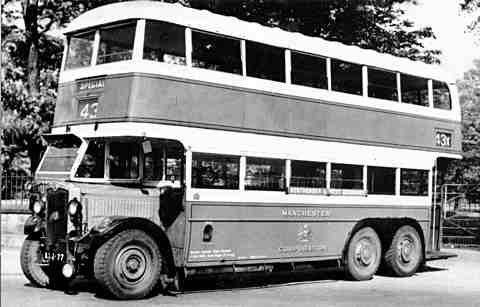
CROSSLEY OIL ENGINES ADVERTISEMENT.Engines for motorcoaches,lorries and buses.Note the Leyland-style finned oil-cooler underneath the front of the engine:-
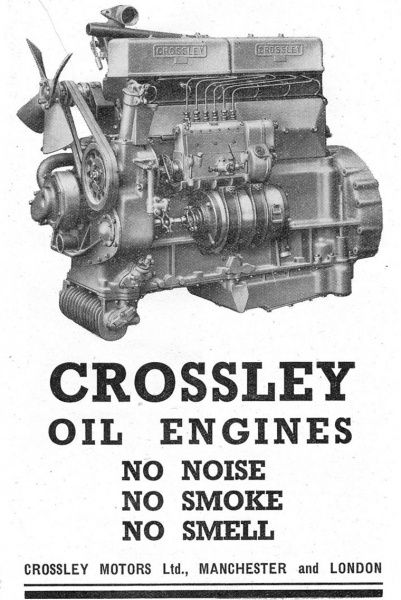
CROSSLEY MANCUNIAN/CROSSLEY H28/24R 52-SEAT STREAMLINER DOUBLE DECKER BUS,Chassis No.92239,CVR
753,November 1936.Manchester Corporation Transport Streamliner No.551:-

CROSSLEY BETA,DROPSIDE-BODIED,12-TON 6x2 OR 6x4 LORRY,BNE 610,1935:-
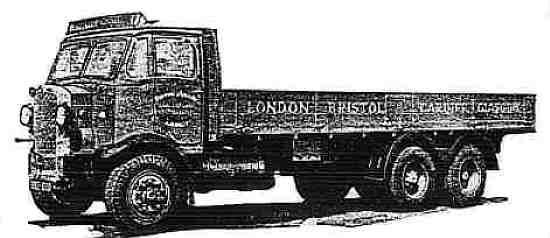
CROSSLEY IGL3 NORMAL CONTROL 6x4 STREAMLINED AIRFIELD FIRE CRASH TENDER FIRE ENGINE,GMF 697,Royal
Air Force,1937,one of 50 - they were painted red.Full front view:-
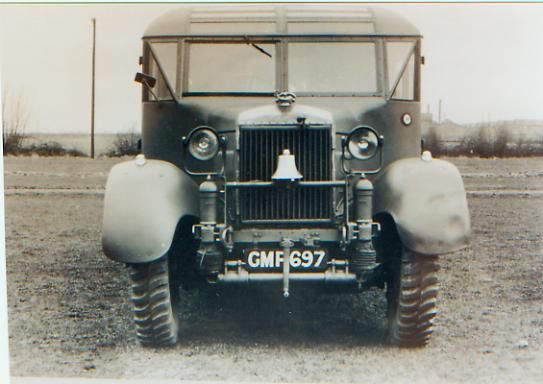
Rear offside view:The very attractive rear end styling reminds me so very much of my showman
friend George Thomas -G.T.- Tuby’s magnificent AEC Matador 4x4 Showmans Road Locomotive,BHE 437,which had
very similar rear end styling! ![]()
![]() :-
:-
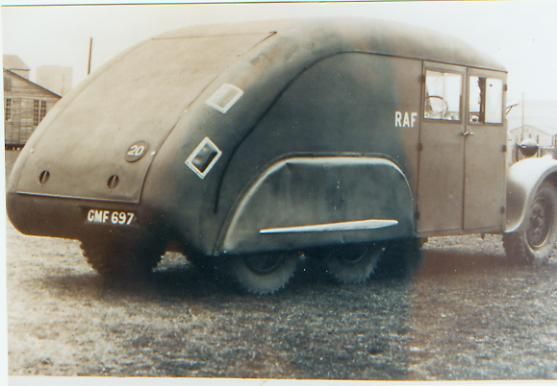
CROSSLEY FORWARD CONTROL 6-TON,PILOT DROPSIDE-BODIED,4x2 LORRY PROTOTYPE OF 1950:-
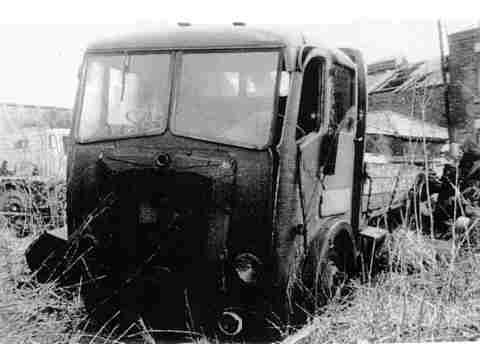
CROSSLEY DD42/8/CROSSLEY H56R DOUBLE DECKER BUS,Chassis No.95908,HET 513.ROTHERHAM No.213,August
1953.The last genuine Crossley double decker bus to be built ![]() :-
:-
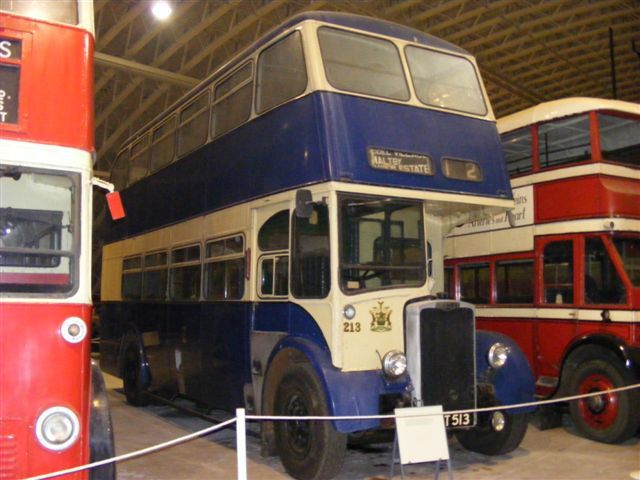
CROSSLEY MOTORS LTD REVIVED IN 1969 ![]()
Leyland National Company Limited was formed in 1969 in partnership between British Leyand and the
National Bus Company,to mass-produce the new Leyland National Single Decker Bus in a new purpose-built factory at Workington,■■■■■■■■■■ - now a Eddie Stobart lorry depot! ![]()
![]()
Since it was legally necessary to form an official company in regard to Leyland National bus production,and that the dormant Crossley Motors Ltd had a large authorised share capital that was needed for the company,it was cheaper to change the name of Crossley Motors Ltd than form a new company.So Crossley Motors Ltd became the Leyland National Company Ltd on Thursday,4th September,1969 ![]()
The first production Leyland National was:-
LEYLAND NATIONAL 1151/2R/0202 B44D Integral Single Decker Bus,Chassis No.00101,TXJ 507K.SELNEC PTE EX30 in April 1972,then Greater Manchester Transport 1330 in April 1974,Manchester Museum of Transport in October 1983.First production Leyland National ![]() :-
:-
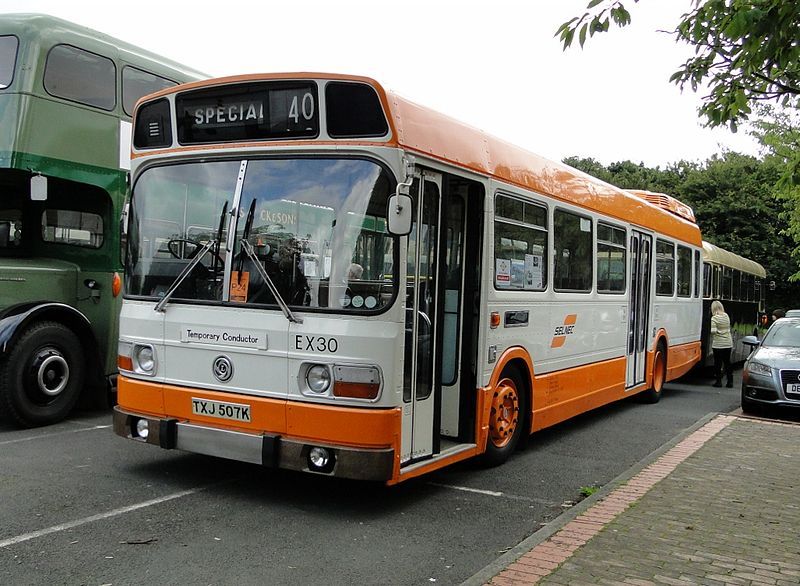
FOUR MORE PHOTOGRAPHS FROM CROSSLEY MOTORS’ GOLDEN YEARS ![]() :-
:-
CROSSLEY Q FWD 4x4 BALLAST ROAD LOCOMOTIVE,used for pulling a tar spreading machine mounted on a 4-wheeler drawbar trailer.World War Two British ex - WD military vehicle:-
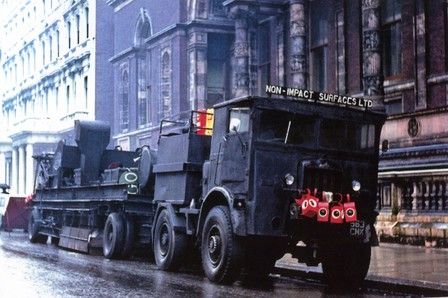
CROSSLEY SD42/7/PLAXTON MB1 C33F MOTORCOACH,Chassis No.97797,Body No.257,FAW 334,March 1949.Albert Davies Transport Ltd,Acton,Burnell,Shrewsbury ![]() :-
:-
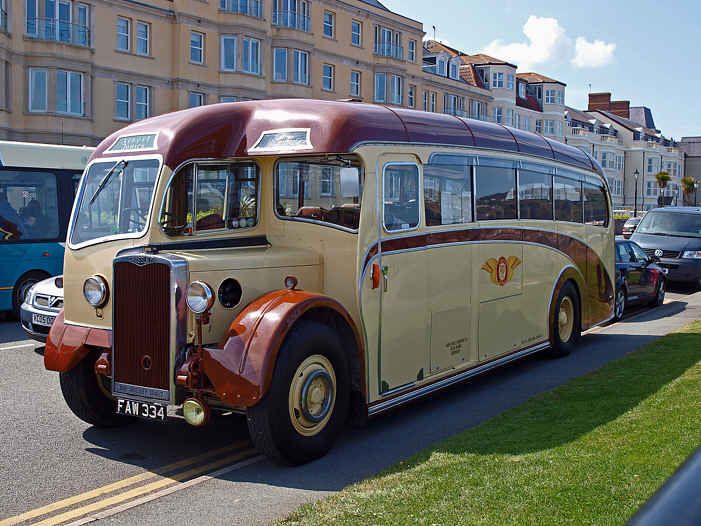
CROSSLEY DD42/3/N.C.B. H30/26R 56-SEAT DOUBLE DECKER BUS,KWB 95,SHEFFIELD A FLEET No.595,January 1948.Pond Street Bus and Motorcoach Station,Saturday,21,2,1959 ![]() :-
:-
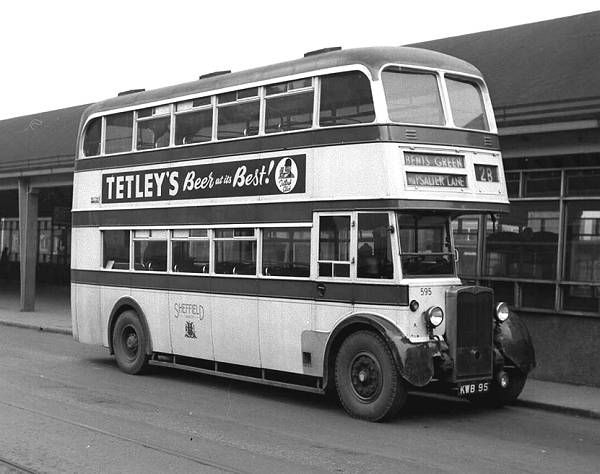
CROSSLEY MANCUNIAN/CROSSLEY STREAMLINER FAIRGROUND BUS,Chassis No.92520,DVM 518.Showman W.Grant’s ex- Manchester Corporation Transport H54-Seat Streamliner Double Decker Bus,No.627.1962 photograph by Fairground Enthusiast,Rowland Scott ![]() :-
:-
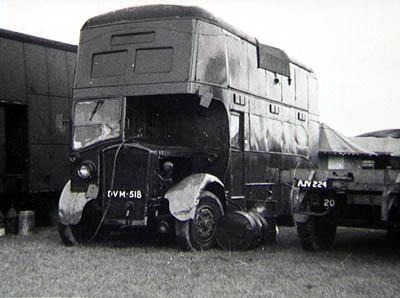
VALKYRIE